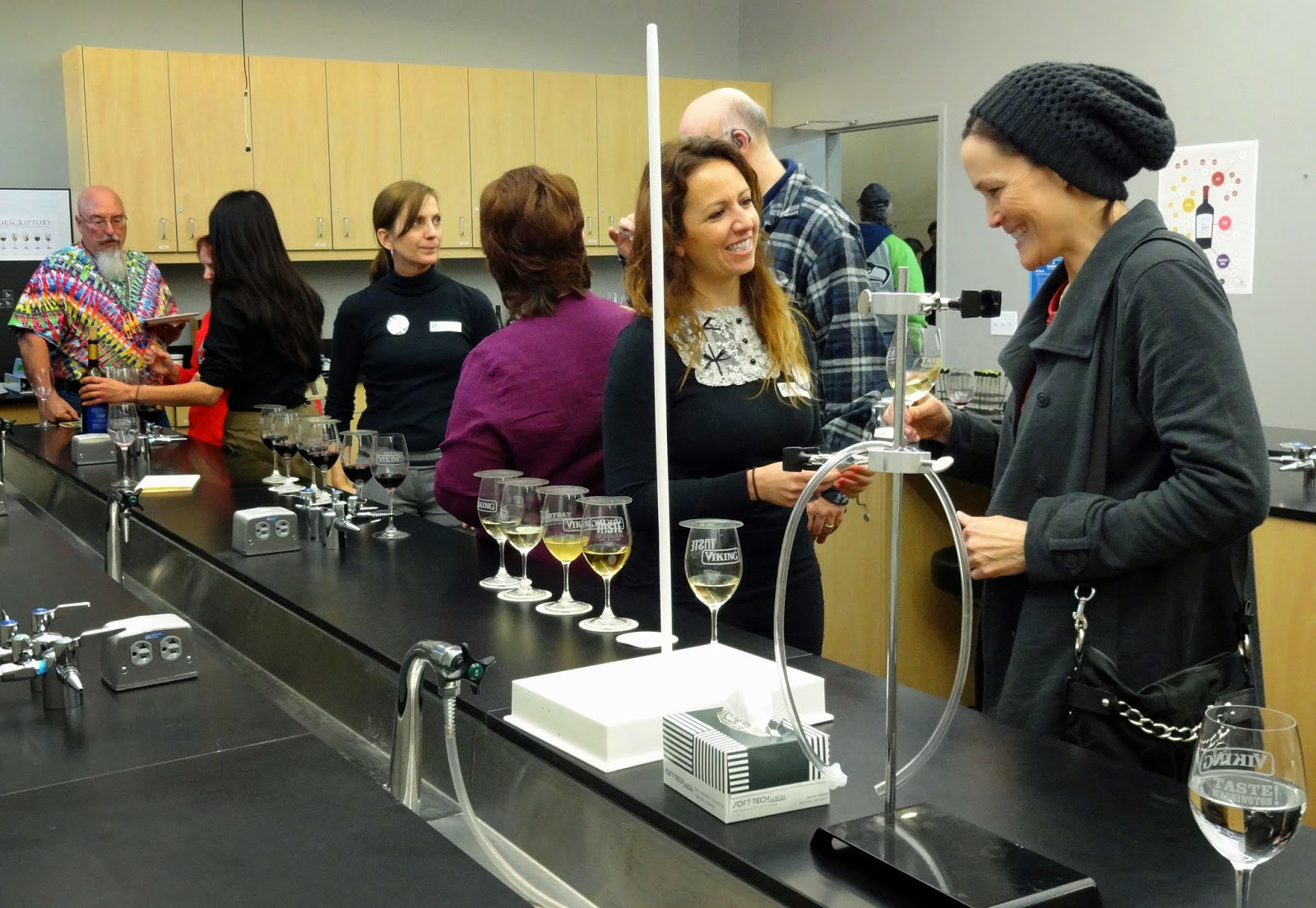 |
| View of the LaFranchi Ranch |
Tours of the dairy farms and creameries in Sonoma and West Marin are always the sell-out attraction of the annual
California Artisan Cheese Festival, held each Spring in Petaluma, CA.
During the 2012 Festival, I was grateful to lead the tour entitled, “California's Cheesemaking Counties: Sonoma to Marin”. Limousine service was provided by
Pure Luxury. Reggie, our wonderful chauffeur, wafted us for a full day between three farmstead cheesemakers covering cow, goat, and sheep milk types.
 |
| Curious Girl ~ Achadinha Morning Milk |
Achadinha Cheese Company Starting with the Pacheco Family Dairy and
Achadinha Cheese Company, we arrived just in time to see “the girls”, as Donna Pacheco affectionately refers to her goats, line up for their morning shift in the milking parlour.
They were as curious about us as we were about them! More than 1000 strong and of various breeds including, Alpines, Saanens, Toggenburgs, la Manchas, Oberhaslis, floppy-eared Nubians, and mixes of all types, it was easy to see how smart and socially savvy these girls are.
While playing with newborn kids, we learned that “Nanny” goats really are just that! Mother goats take turns watching over piles of babies. When one “Nanny” ends her shift, another wanders in to take her place. The babies are never alone.
 |
| Achadinha Kids in a Cuddle |
Highlighting our visit was a creamery tour that explained every step in the process of making Achadinha’s expanding selection of goat and mixed milk cheeses from fresh feta to year old hand pressed wheels. Along the way, we tasted every cheese and met every member of the Pacheo family, a wonderful welcome at the start of our day.
Achadinha Cheese Company Links:Achadinha Cheese Company ; Novato Patch;
Yelp Reviews
Nicasio Valley Cheese Company  |
| View of the LaFranchi Dairy |
Our next stop was the LaFranchi family’s organic dairy and
Nicasio Valley Cheese Company where we first enjoyed a locally sourced lunch while overlooking the gorgeous green hills of West Marin.
 |
| Scott Lafranchi ~ Nicasio Square |
Established by Fredolino LaFranchi in 1919, the cattle ranch and dairy are among the oldest in the county. In 2007, as a tribute to their Swiss heritage, the family began making cheese under the guidance of Swiss master cheesemaker Maurizio Lorenzetti and the venture has become an award winning success.
Sold in leading grocery and specialty stores throughout the Bay Area, Nicasio Valley cheeses are also available in the family’s own delightful shop next to the creamery. Our tour enjoyed lingering there for nearly an hour over a tasting and discussion of the family’s signature Italian-Swiss cheeses.
Nicasio Valley Cheese Links:Nicasio Valley Cheese ;
North Bay Business Journal ;
Novato Patch
Barinaga Ranch  |
| Spring Lambs at Barinaga Ranch |
The tour finale at
Barinaga Ranch in Marshall could not have been more exciting. Just as we arrived, a ewe went into hard labor and so we followed Marcia Barinaga, the ranch owner and cheesemaker, into the barn where she helped to deliver twin lambs
.Marica is one of Marin’s most recent converts to ranching and cheesemaking. Both she and her husband, Corey Goodman, are molecular biologists who planned to use the ranch as a place to retire. But for Marica, an avocation soon became a new full-time career.
 |
| Ewes and Lambs at Barinaga Ranch |
Located on a hillside above the east shore of Tomales Bay with views of Point Reyes and the Pacific beyond, the Barinaga Ranch is a spectacular member of the
Marin Agricultural Land Trust (MALT), the first land trust in the United States dedicated to preserving farmland and maintaining it for productive agriculture. Along with an experienced ranching staff and four Great Pyrenees shepherd dogs,
Marcia raises flocks of East Friesian and Katahdin sheep and is experimenting with a crossbreed of the two. Once the lambs are weaned in the Spring, she begins milking the ewes twice a day in order to produce a Basque style cheese that harkens back to her family heritage.
In 1900, Marcia’s grandfather immigrated from a Basque village to the mountains of Idaho where he became a sheep rancher. Although he didn’t make cheese with his sheep milk, Marcia saw Basque cheesemaking as a natural tribute to her ancestral lifestyle. In 2007, she went to the Basque country and learned to make their traditional cheeses. Produced by hand and in limited quantities, Marcia's cheeses are now among the most celebrated in the country.
Barinaga Ranch Links:Barinaga Ranch ;
Bay Area Bites ;
Culture Magazine
 |
| Cuddle with a Cute Kid! |
The California Artisan Cheese FestivalVisit the Festival Website: (
artisancheesefestival.com) for schedule and registration details. Tours sell-out fast! Get tickets now or get on the waiting list. An adventure of the heart is calling!


















































